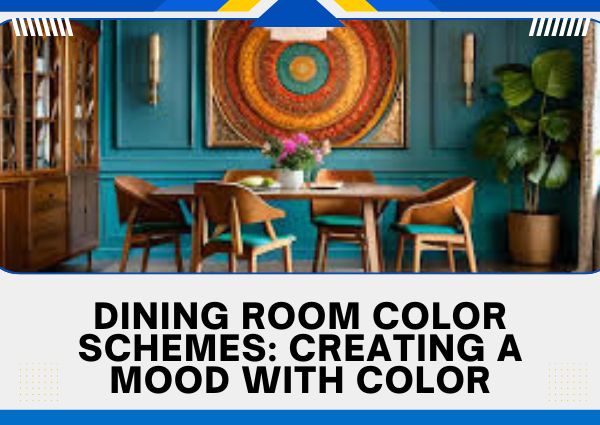The dining room is more than just a place to eat sa space where family and friends gather to share meals and create memories. The color scheme you choose for your dining room can have a significant impact on the mood and ambiance of the space. In this blog, we will explore different dining room color schemes and how they can help you create the perfect atmosphere for your dining area.
Why Choose the Right Dining Room Color Scheme?
The color scheme of your dining room can set the tone for the entire space. It can influence the mood, ambiance, and overall feel of the room. Whether you want to create a cozy and intimate dining
experience or a bright and lively space for entertaining, choosing the right color scheme is essential.
Choosing the Right Dining Room Color Scheme
When choosing a color scheme for your dining room, consider the following factors:
1. Room Size: The size of your dining room can influence the choice of color scheme. Lighter colors can make a small dining room feel more spacious, while darker colors can add warmth and coziness to a large dining room.
2. Lighting: The amount of natural light in your dining room can affect how colors appear. Consider the direction of your windows and how natural light changes throughout the day.
3. Functionality: Consider how you use your dining room. If you use it primarily for formal dinners, you may want to choose a more elegant color scheme. For a more casual dining experience, you can opt for
a more relaxed and inviting color scheme.
4. Personal Preference: Ultimately, the color scheme you choose should reflect your personal style and taste. Choose colors that you love and that make you feel comfortable and happy in your dining room.
Popular Dining Room Color Schemes
There are many different color schemes you can choose from for your dining room. Here are some popular options:
1. Neutral Color Scheme: Neutral colors such as white, beige, gray, or taupe can create a clean, sophisticated look in your dining room. These colors can also serve as a versatile backdrop for other
decor elements.
2. Monochromatic Color Scheme: A monochromatic color scheme uses different shades of the same
color to create a harmonious and cohesive look. For example, you could use varying shades of blue or
green for a calming and serene dining room.
3. Complementary Color Scheme: Complementary colors are opposite each other on the color wheel and create a bold and dynamic look when used together. For example, pairing blue with orange or yellow with purple can create a vibrant and energetic dining room.
4. Analogous Color Scheme: Analogous colors are next to each other on the color wheel and create a harmonious and soothing look when used together. For example, pairing green with yellow or orange can create a warm and inviting dining room.
5. Bold Color Scheme: If you want to make a statement with your dining room, consider using bold and vibrant colors such as red, purple, or teal. These colors can add drama and personality to your dining room.
Tips for Using Color in Your Dining Room
Balance: Balance bold colors with neutral tones to avoid overwhelming the space. Accents: Use accent colors sparingly to add pops of color and interest to the room. Lighting: Consider how different lighting conditions will affect the colors in your dining room.
Experiment: Dont be afraid to experiment with different color combinations until you find the perfectone for your dining room.
Incorporating Color into Your Dining Room
There are several ways you can incorporate color into your dining room:
1. Walls: Paint the walls in a color that complements your dining room furniture and decor. Consider using an accent wall to add depth and interest to the room.
2. Furniture: Choose dining room furniture in colors that complement your color scheme. For example, you could choose dining chairs in a bold color to add a pop of color to an otherwise neutral dining room.
3. Accessories: Use accessories such as curtains, rugs, and table linens to add color and texture to your dining room. These items can be easily changed to update the look of your dining room.
4. Artwork: Hang artwork or photographs on the walls to add color and personality to your dining room. Choose pieces that complement your color scheme and add visual interest to the room.
Conclusion
Choosing the right color scheme for your dining room is an important decision that can significantly impact the mood and ambiance of the space. Whether you prefer a neutral and elegant dining room or a bold and vibrant space, there are many different color schemes to choose from. By considering factors such as room size, lighting, and personal preference, you can create a dining room that is both beautiful
and functional.

